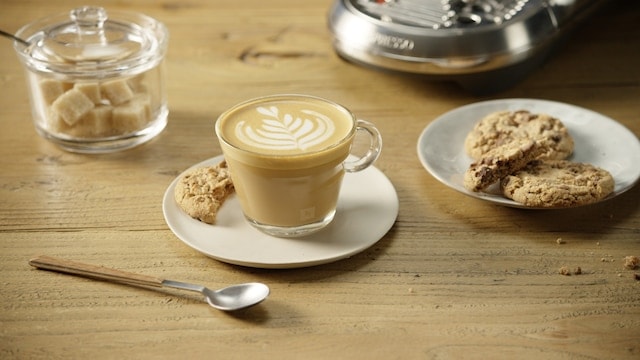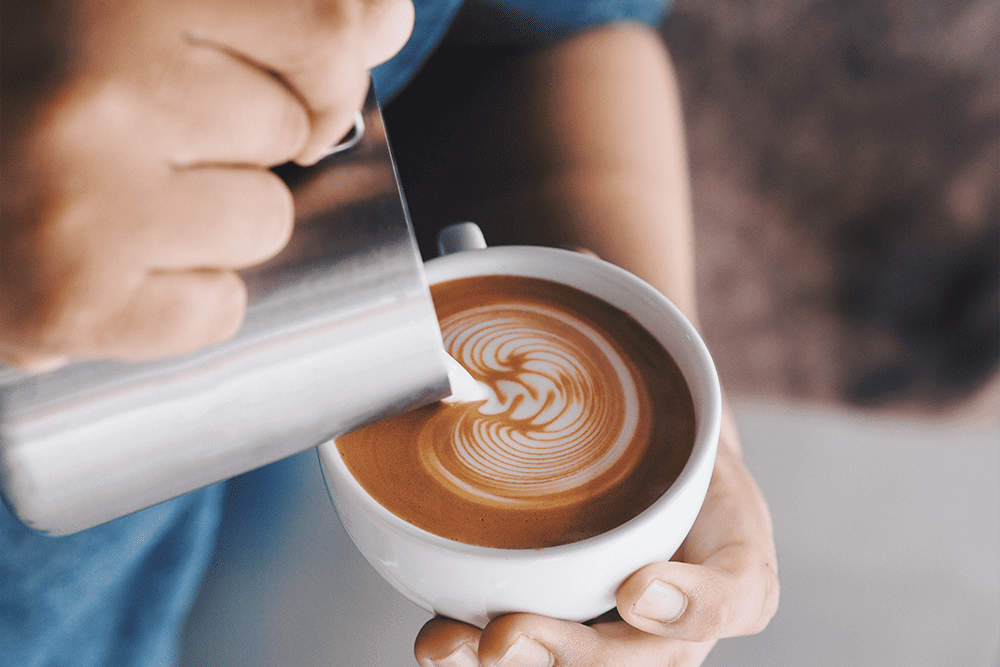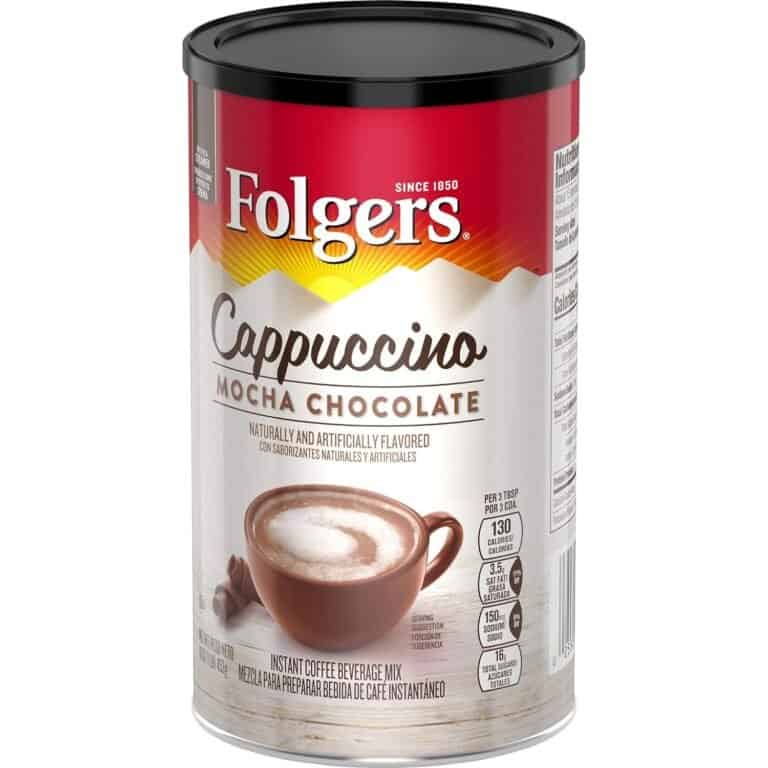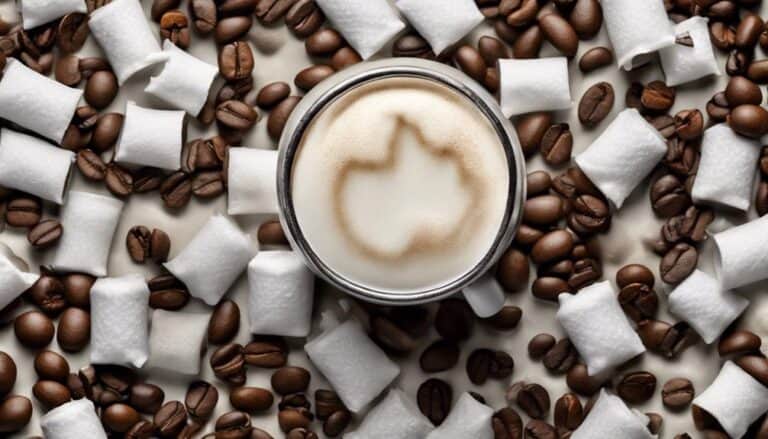The Perfect Pick-Me-Up: The Art of Crafting a Flat White Cappuccino

In today’s fast-paced world, coffee has become a quintessential part of our daily routine. From espresso to lattes, there are many choices available when it comes to this beloved beverage. However, if you’re looking for something that strikes the perfect balance between bold flavor and velvety texture, then a flat white cappuccino might just be the answer you’ve been seeking.
This humble drink may seem simple in nature but mastering its delicate art takes patience, precision and practice. In this article we will explore the intricacies involved in crafting the perfect flat white cappuccino from start to finish – helping you discover a new favorite pick-me-up!
The Origins of the Flat White Cappuccino: A Brief History
The origins of the flat white cappuccino can be traced back to Australia and New Zealand in the 1980s. It is believed that these countries were the first to introduce this delicious coffee variant, which quickly gained popularity among their residents. A signature feature of a flat white cappuccino is its smooth microfoam texture, created by heating and aerating milk into a velvety consistency before combining it with espresso.
In recent years, the flat white cappuccino has become increasingly popular throughout Europe and North America, thanks in part to large coffee chains introducing it on their menus. While some variations differ slightly from region-to-region or café-to-café, the core components remain consistent: two shots of espresso topped with steamed milk containing silky microfoam. Today, flat whites are enjoyed around the world for their rich flavor profile and luxurious mouthfeel – making them a must-try for any avid coffee drinker seeking something new.

The Importance of Choosing the Right Beans
When it comes to crafting the perfect cup of coffee, choosing the right beans is crucial. The flavor and aroma of coffee are directly related to the type of beans used, as well as their roasting process. High-quality Arabica beans are often preferred for their complex flavors and lower acidity levels. In contrast, Robusta beans have a stronger taste with higher caffeine content but can be bitter if not roasted properly.
Additionally, the origin of coffee beans also plays a significant role in determining their quality. Beans from Africa usually have fruity or floral notes while those from Central America or South America often exhibit chocolatey or nutty undertones. Therefore, knowing what you like and selecting your beans accordingly can ensure that your flat white cappuccino has that distinctive taste you crave every morning.
Overall, when making coffee, investing in high-quality beans ensures that every sip leaves one feeling satisfied and wanting more. Choosing wisely may mean experimenting with different varieties until finding what suits an individual’s tastes best – but it is worth trying this to achieve an aromatic blend suitable for any occasion!
The Art of Steaming Milk: Achieving the Perfect Consistency
Steaming milk may seem like a straightforward process, but achieving the perfect consistency for a flat white cappuccino requires skill. Firstly, it’s important to choose the right type of milk – full cream or dairy-free alternatives tend to froth better. The container used for steaming should be narrow and deep enough to create a whirlpool effect when the steam wand is inserted. Positioning the tip of the wand at an angle just beneath the surface of the milk helps incorporate air into the mixture.
The texture of perfectly-steamed milk should be smooth and silky, with tiny bubbles created by incorporating air evenly throughout. Overheated or under-frothed milk can result in a thin or bubbly texture that detracts from your drink’s flavor profile. To achieve optimal results, practice playing with temperature variations and timing during milk preparation until you master this skillful technique.
Choosing quality beans is equally important as mastering steaming techniques when making coffee beverages like flat white cappuccinos – you’ll reap delicious rewards with patience and attention to detail!
The Role of Temperature in Crafting the Perfect Flat White Cappuccino
The temperature plays an integral role in crafting the perfect flat white cappuccino. The desirable temperature lies between 60°C and 70°C, with the milk reaching a maximum of 70°C to avoid scalding or imparting a burnt taste to the drink. Temperature also affects the texture of the micro-foam created by steaming milk as it alters both its thickness and stability.
Moreover, maintaining consistent temperature throughout is vital for creating uniform cups every time. A slight excess in temperature can alter foam texture or even burn your entire batch causing consistency issues if recreated with different temperatures. With these variables differing within each cup, understanding how best to control them becomes imperative when making this delectable beverage.
A barista pays close attention while building froth without introducing too much air that can cause stiff peaks rather than soft silky ones desired on top of shimmery espresso shots curled under perfectly textured milk resulting in creating an unforgettable Flat White Cappuccino experience!
The Science Behind Creating Latte Art
Creating latte art is a science that requires attention to detail and skillful techniques. The basis of latte art lies in the steaming of milk and its interaction with espresso. Whole milk, carefully steamed at a consistent temperature creates microfoam, which has just the right texture for creating perfect designs on top of your cappuccino or latte.
The two key factors in creating great latte art are temperature and consistency. Perfectly warm and velvety steamed milk provides an ideal base for pouring intricate patterns on top of drinks. Understanding how to control steam pressure during the process allows you to activate different properties that affect the texture and stretchiness of your frothed beverage. Thus, mastering these technical details can lead to beautiful works-of-art atop each cup fresh from your coffee machine negating any need for any fancy stencils!
Common Mistakes to Avoid When Making a Flat White Cappuccino
Crafting the perfect flat white cappuccino requires skill and attention to detail. However, many baristas make common mistakes that can undermine their efforts. One of these is over-foaming the milk, which can lead to a thick layer of foam on top that obscures the delicate flavors beneath. Another mistake is not properly heating or steaming the milk, resulting in either a lukewarm or scalded drink.
Another common mistake when making a flat white cappuccino is using low-quality coffee beans or brewing them incorrectly. This can result in an unbalanced flavor profile that lacks complexity and depth. Additionally, failing to pour the espresso shot carefully into the steamed and textured milk can cause it to sink too deep or float too high, ruining the balance of flavors.
Avoiding these common mistakes requires patience, practice and attention to detail. By paying careful attention to each step of the process – from selecting high-quality ingredients to accurately measuring out proportions – you’ll be able to craft a delicious flat white cappuccino worthy of even the most discerning palate.
The Perfect Pairing: Suggested Snacks to Enjoy with Your Flat White Cappuccino
For most coffee lovers, drinking a flat white cappuccino is an experience that requires complementary snacks. The right snack pairing can not only enhance the flavor profile of the beverage but also provide a satisfying balance of textures to excite your taste buds. One perfect pairing for this popular drink is with caramelized biscuits or biscotti; these sweet treats are known for their ability to mix well with milky drinks while providing that essential crunchy texture.
Another excellent suggestion is pastries such as croissants, danishes and muffins. These baked goods pair well with any coffee due to their buttery undertones that compliment the richness of the beverage and provides another layer of flavour complexity on your palate. Savoury options are also worth exploring-such as smoked salmon or scones- they bring out other flavours present in some brands’ blends like Nespresso’s Fortissio Lungo, which boasts notes akin to toasted bread when consumed alongside cheesy savouries like quiches or crackers respectively making it another great option for flat white espresso enthusiasts.
As always, experimentation is key when finding the perfect snack pairing for your coffee preference so don’t be afraid to try something new!






One Comment